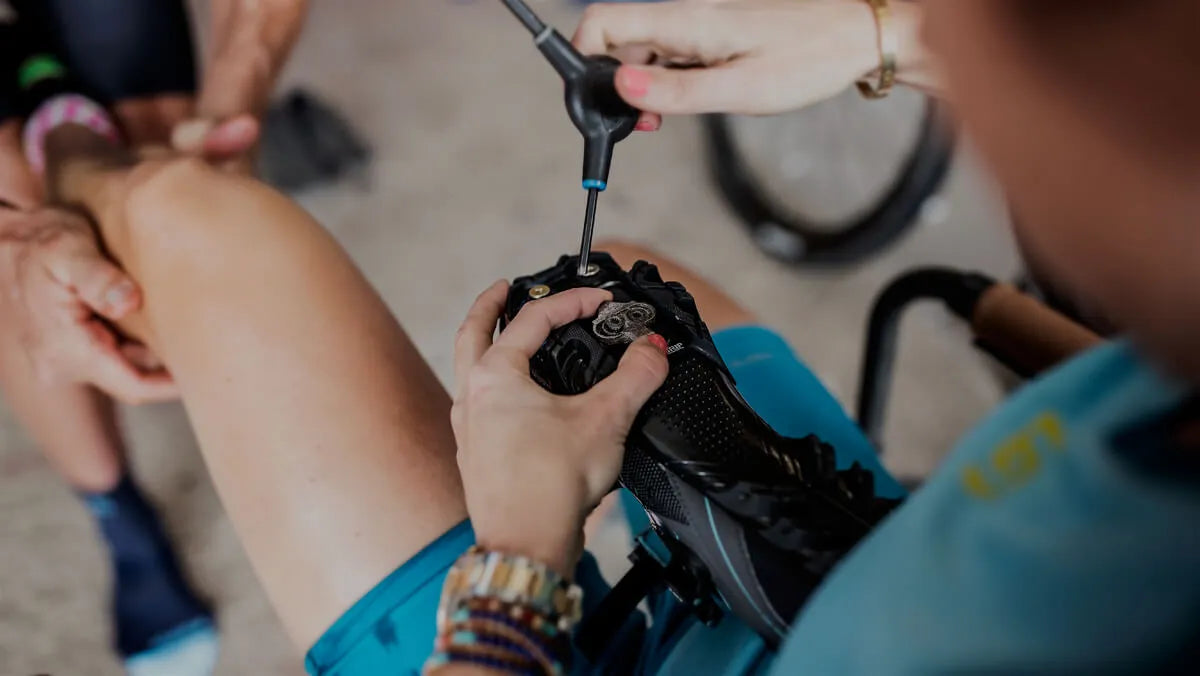by Garneau
The advantages of clipless pedals shouldn't be underestimated. Yes, it'll feel weird at first. Yes, there's a learning curve. Yes, you'll probably tip over a few times...But, the benefits outweight the peril! It might not feel intuitive to make the move between platform pedals that you can use with plain old sneakers, and clipless pedals that clip your feet into a tiny, irregularly-shaped pedal. But once you make the move, you won't want to go back!
Their name might lead you to think otherwise, but cyclists actually “clip” into clipless pedals contrary to regular platform pedals and old school toe strap pedals. They work like a ski binding, locking a cleat on your cycling shoe into the pedal as you step on it. To release the cleat, you simply twist your heel outwards slightly. The concept of being stuck to your pedals might seem intimidating at first, but once you see how simple it is to get out, you'll be at-ease.

But what's the point, who would want to be attached to their pedals, regardless of how easy it is to get out? There are a couple of them:
Being attached to your pedals lets you both push down and pull upwards on your pedals, making your pedal stroke smoother and much more efficient. Using the same amount of energy, you'll ride farther, faster and with more comfort than when only using a downward force to drive your bike forwards. Being able to yank upwards on the pedals is especially useful in high power situations, like when you're sprinting, or even climbing.
Cyclists actually clip into "clipless" pedals.
Riding with clipless pedals means you'll also be able to wear true cycling shoes too. Apart from just looking cool (various styles and colors exist to go with a variety of looks from brighter to more sedate), they have a purpose. Cycling shoes have a comfortably snug fit (like a glove), and a rigid sole. As you pedal, energy isn't wasted in flexing the sole, or having your foot slip around, even slightly. In other words, all of your pedal stroke's force is directly transferred to the pedal, the crank and drivetrain... and to getting you to your destination!
Finally, clipless pedals help you ride with more control. Instinctively, you'll start distributing your weight, pushing and pulling through your legs with grace, and just feeling in overall better control of your bike. You'll feel like one with your bike. This is especially remarkable on a mountain bike when you're riding in the trails.

Like Ski Bindings
Like ski bindings, the resistance of many clipless pedals' retaining mechanism can be adjusted. If you're just getting started, your local bike shop can help you adjust them so you're comfortable with the force that it takes to get in and out. You might want the resistance to be low when you first start. More experienced riders like a tighter grip that gives them confidence that they will really be able to pull on the pedals as they drill it to the finish line, a town sprint sign, or on the rush to be first to the post-ride coffee shop stop.




